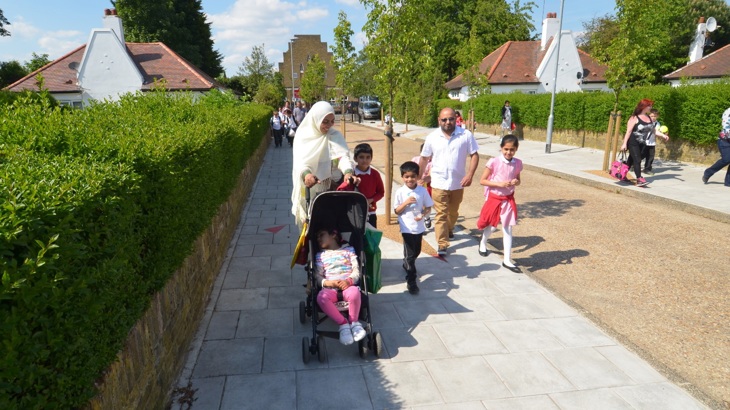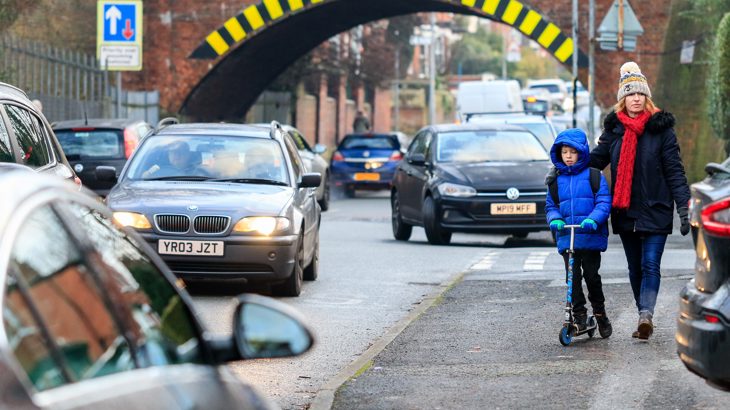The Hands Up Scotland Survey looks at how pupils across Scotland travel to school and nursery each year. Cecilia Oram, our Scotland Delivery Co-ordinator for Education and Young People tells us why the provisional release of the 2020 Hands Up Scotland Survey results has lots of promising news.

What the results show
For most of us getting children to school is a local journey that can usually be easily walked.
The national Hands Up Scotland Survey (HUSS) 2020 results were published as a provisional release today.
And looking at the results, many parents and pupils voted with their feet last year and decided to walk to school instead of taking the car or the bus.
Walking to school is up by 3.8 percentage points on 2019 figures, helping make active travel levels (walking, cycling and scootering) across the country the highest of the last ten years.
Car use, which has shown an increasing trend since 2013, actually decreased in 2020. Bus use for getting to school also declined.

Sustrans 2020. Chris Foster. All rights reserved.
Exploring the results in the context of Covid-19
Slight decreases were seen in 2020 in cycling, scootering, skating and park and stride.
The fall in scootering and cycling could be attributed to measures that some schools in Scotland took during the pandemic.
These included restricting the use of scooter and cycle parking to ensure physical distancing.
Parents and carers’ pandemic working patterns also appear to have impacted children’s travel to school habits.
For example, when parents travelling onwards by car to workplaces is reduced, this may allow more children to travel to school on foot.
This is especially clear in the figures for primary-aged children, where walking to school was up by 5 percentage points at a national level.
The messaging from the Government about staying local, being physically active and only using public transport if essential, may have also had an impact on travel to school choices by parents and young people.
Looking at the schools that took part
Fewer state schools took part in the Hands Up Scotland Survey (HUSS) in 2020.
But considering the pressure schools were under in September the return rate of 70.4% of schools in Scotland is commendable.
HUSS 2020 data is comparable with other years and represents an extremely valuable snapshot of travel habits in Scotland.
It should be noted that the reduced participation in September 2020 data collection was not evenly spread across Scotland and that the full data release will be made in June 2021.
Trends at a national level
At a national level, walking to school was up across all types of schools.
Walking increased in 29 local authorities and deceased in just three areas.
The national figures do mask some significant regional variations.
For example, driving to school, although down nationally, did increase in 12 local authorities.
However, against the backdrop of increasing car use and driving to school in 2019 being at its highest since the survey began, this data represents a remarkable change in behaviour and travel habits.
A new normal that benefits children's health and wellbeing
Whether out of necessity or choice there is no doubt that travelling to school habits in Scotland has changed.
The wheels have been set in motion.
So let’s hope that when we return to ‘normal’ in the next school year, it’s a new normal that will benefit the health and wellbeing of large numbers of children and young people, both now and in the future.





